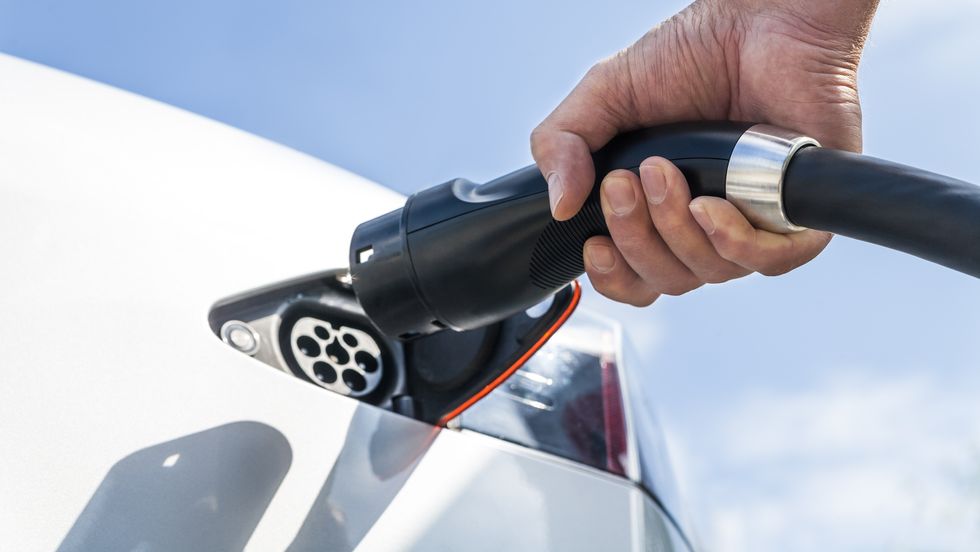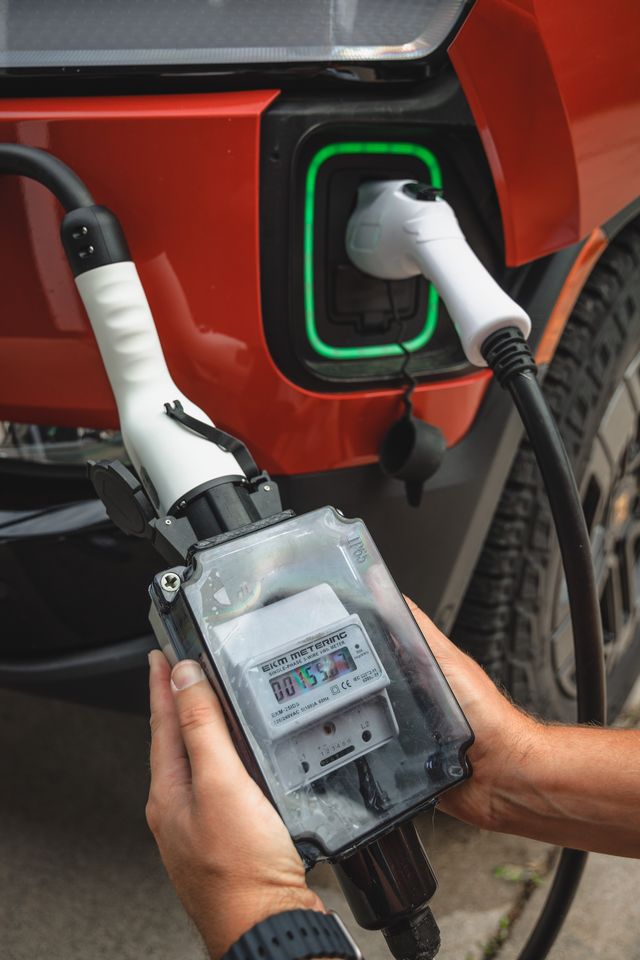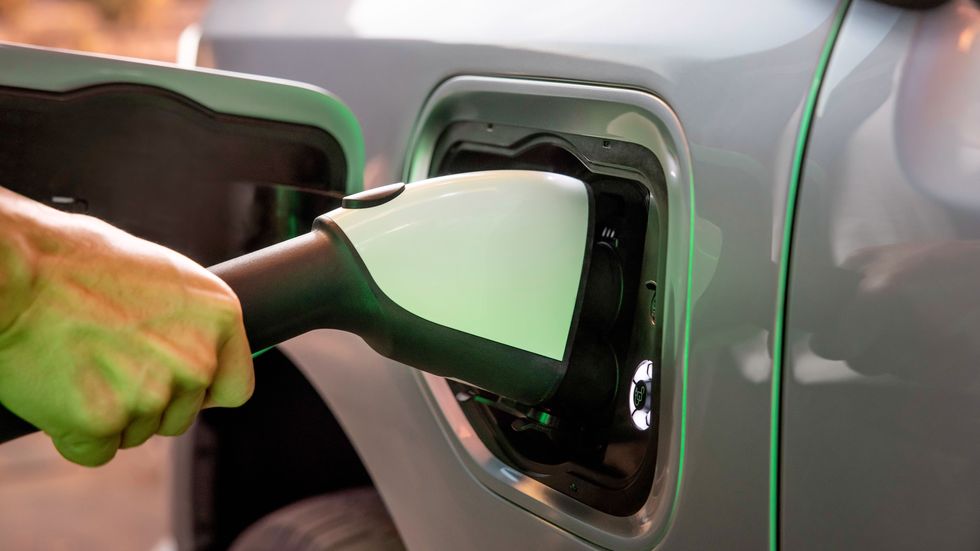The Best Home EV Chargers For 2024, Tested By Experts
Original Post Date: July 1, 2024
Source: Autoweek
Read the full article here
We tested some of the top home EV charging units on the market to find the best electric car chargers out today.
EV ownership is a big change for drivers accustomed to internal combustion engines. From regenerative braking to single-speed transmissions to charging, owning an electric vehicle comes with a new set of features and responsibilities. The most important of these is EV charging.
Much like plugging in your phone before going to bed, most of your charging is likely to happen at home. Home EV charging is much cheaper and more sustainable than DC fast-charging, and is the logical choice for anyone with access to the right power source.
Key Takeaways:
- The ChargePoint Home Flex EV Charger is our Best Overall Home EV Charger. The excellent ChargePoint app features a user-friendly interface and pinpoints your cost to the penny.
- Our Best Budget Home EV Charger is the Emporia. Despite its affordable price, it doesn't sacrifice features.
- Another great option is Tesla's Universal Wall Connector. It has a built-in adapter so you can switch between J1772 and NACS/J3400 plug types easily.
After thorough testing, the Gear Team picked seven of the best EV home chargers ranging in price from $300 to $700. These universal level 1 and 2 chargers will work with any EV on the market today. Some boast features like Wi-Fi connectivity, allowing users to monitor charging and control the unit via an app, while others are rugged, no-frills chargers made to last inside and out. Some chargers listed offer variants with slightly different prices.
Home EV Charging Basics
Before you run out and buy the cheapest EV charger you can find and install it in your garage, there are some facts you should know.
EV Charging Levels:
- Level 1: Using 120-volt AC electricity (i.e., a standard household outlet) with an output of roughly 1 kilowatt, one of these devices could take days to charge your EV
- Level 2: Uses 240-volt AC electricity to charge with outputs generally between 6 and 19 kilowatts. Should charge an EV with a modestly sized battery overnight
- Level 3/DC Fast-Charger: Many public chargers are this type, but they're illogical for home use due to their high cost. But just so you know, these chargers use 400- or 800-volt DC electricity to charge with output ranging from 50 to 350 kilowatts, charging a typical EV's battery from 10 to 90 percent in as little as 30 minutes
Things to Consider When Buying an EV Charger
Before you buy a home EV charger, there are a ton of factors to consider. Will it work with not only your current EV, but will it adapt to any future EVs you may purchase? How much will an EV charger affect your home electricity bill? And most importantly, can your home's electrical system handle the workload? Here's what to think about before buying a home EV charger.
Output
This is how much charging power is being sent from your wall charger to your electric vehicle, measured in kilowatts. The voltage of the electrical circuit multiplied by the number of amps of current flowing equals the power in watts; 1000 watts equals a kilowatt, so a 240-volt outlet drawing 32 amps of current is putting out 7.7 kW of power.
Household Circuit Output
We highly recommend consulting an electrician and, depending on your confidence in your ability to measure your house's electrical circuit, you may want to take this step first because you will need a certified electrician to verify your home's circuit capacity and install any necessary equipment upgrades.
To charge most EVs overnight while keeping costs down, we recommend at least a modest 40- or 50-amp circuit. To see the maximum your home can handle before blowing its main breaker, check the main fuse in your breaker box for its amperage rating. If you have 150- or 200-amp service or higher, you may have enough wiggle room to add an EV charger without an upgrade. But again—it's always wise to ask an expert.
Charge Rate
The charge rate is crucial to estimating how long it will take your EV to charge. Your charge rate will be affected by three factors: the output of your household circuit, your charging equipment, and your electric vehicle's onboard charger.
Charge rate is expressed in kilowatts—volts times amps equals watts, and 1000 watts equals a kilowatt. So if you're charging at 6 kilowatts and your EV has a 60.0-kWh battery, the charge time from empty to full will be roughly 10 hours, if not longer due to losses during charging and slowing down of the charge rate as the battery nears 100 percent.
Connector Types
The home EV you ultimately purchase will have a connector that plugs into your car, and you've got to choose the right one for your EV. There are two main types: J1772 and Tesla's North American Charging Standard (aka NACS or J3400), which is becoming ever-more prevalent in the EV industry. Adapters that let you switch between these connectors are widely available, allowing you to use your charger for different types of EVs.
Cost to Install
This depends on whether you have enough spare electrical capacity in your home circuit or you need to hire an electrician to upgrade your system. If your circuit has enough capacity, you might be able to run a new electrical line for a few hundred dollars. If not, upgrading your home's electrical system can cost a few thousand bucks.
Wi-Fi Connectivity
If you wish to keep track of your EV's electrical use and cost, you'll want a home-charging unit with Wi-Fi connectivity. This allows you to monitor charging, receive alerts, and control the unit remotely via an app.
Accessories and Variants
Most EV chargers offer different variants to suit your needs. These variants (hard-wired or plug, different output capabilities, varying cord lengths, etc.) are typically sold at slightly different prices. Make sure you look at all the various options from any manufacturer you're considering to make sure it suits your needs.
Outdoor Ratings
If you want your EV charger mounted outside, it's doable. Each charging unit we tested below has an outdoor-grade rating according to either the National Electrical Manufacturers Association (NEMA) or Ingress Protection (IP) standards. There's additional information below on deciphering these ratings below in our FAQs section.
Electric vehicle technology is constantly and rapidly changing. We'll be updating this roundup regularly, so check back often. Based on extensive testing and evaluation by the Gear Team, here are our picks for the best home chargers for electric cars you can buy today.
The Best Home EV Chargers, Tested

- Output capability: 50/48/40/32/24/16 amps (12.0/11.5/9.6/7.7/5.8/3.8 kW)
- Cord length: 23 feet
- Cord management: Built-in
- Outdoor rating: Yes (NEMA 3R)
ChargePoint's Home Flex unit integrates into the same app used to connect to the company's numerous public charging units. The Gear Team found the app to be the most user-friendly of all the ones they tested, with the clearest display and easiest-to-understand charts. Total charge time and energy output during each charge are also easy to read, comprehend, and schedule.
The ChargePoint app also offers the most in-depth cost-tracking, allowing users to select a rate plan from their local utility company. The Gear Team was able to calculate the actual cost of charging down to the penny, even when charging on a variable rate. They also appreciated the built-in notch at the top of the unit to wrap the cord around; many other units require the purchase of a second cord-management device.

- Output capability: 48–6 amps (11.5–1.4 kW)
- Cord length: 24 feet
- Cord management: Included wall mount
- Outdoor rating: Yes (NEMA 4)
This is an impressive WiFi-connected entry at an attractive price point. The 11.5-kW output capability is at the high end of the chargers tested. The Emporia has just about everything a consumer could want, including detailed electricity pricing using your actual utility plan.
Emporia's entire electricity-tracking universe is integrated into Emporia's app. However, the Gear Team found that navigating around all of these areas of the app is overly confusing if you're just charging your EV.

- Output capability: 48/40/32/24/16/12 amps (11.5/9.6/7.7/5.8/3.8/2.9 kW)
- Cord length: 24 feet
- Cord management: Built-in
- Outdoor rating: Yes (NEMA 3R)
Don't own a Tesla? The company's Wall Connector is still a great EV charging option for your home. In addition to its rapidly-endorsed NACS plug, Tesla also offers its home charging unit with the J1772 plug that most other EVs currently use. Connecting to a non-Tesla EV simply requires an adapter. The Wall Connector's sleek shape and glass-like clear top layer make it the most visually appealing charger tested.
The setup process for the Wall Connector is simple; just scan the QR code on the side of the unit to connect to WiFi, then set the output limit through a web-based interface.
Although the Wall Connector is capable of almost the highest output of the devices tested by the Gear Team, (48 amps or 11.5 kilowatts), it also has the thinnest cables. They're easy to wrangle, but will the small diameter affect long-term durability?

- Output capability: 40/32/24/16/12/6 amps (9.6/7.7/5.8/3.8/2.9/1.4 kW)
- Cord length: 25 feet
- Cord management: Built-in
- Outdoor rating: Yes (NEMA 4X/IP66)
When Car and Driver first tested home EV charging units in 2022, the Gear Team preferred the JuiceBox charger to all the rest. Since then, the company has redesigned its app—and it's somehow less intuitive now? Nevertheless, the JuiceBox is still one of the most feature-rich Wi-Fi-enabled Level 2 chargers you can buy, and deserves a spot on this list.
The JuiceBox comes in three output levels. In addition to the 40-amp version tested, there's a 48-amp version that's at the high end of the price spectrum for this group, and a 32-amp version that costs less.
The JuiceBox provides energy output and charge time for each session, customizable push notifications, and the ability to set charge times to take advantage of variable utility rates.

- Output capability: 32/16/13/10 amps (7.7/3.8/3.1/2.4 kW)
- Cord length: 21 feet
- Cord management: none
- Outdoor rating: Yes (IP67)
This Lectron is one of the least expensive home EV charger options on the market. Even though it isn't a "smart" unit with Wi-Fi capability and 32 amps is at the low end of the charging spectrum, it has a small LCD screen that displays voltage, amperage, charge time, energy (kWh), and temperature. There's no wall mount for the cord, but a simple hook or hose reel should suffice.
This unit lets you set the limit on current output, which can be adjusted among 10, 13, 16, or 32 amps to match your wall circuit. When you plug in, charge time starts over, but the kilowatt-hour readout doesn't. Further, there's no app monitoring charging, so if you want to track your car's efficiency you have to unplug and replug it before every charge. If you want to track your charging fastidiously, one of the Wi-Fi-connected units on our list is probably a better choice.

- Output capability: 40/32/24/16 amps (9.6/7.7/5.8/3.8 kW)
- Cord length: 24 feet
- Cord management: Included wall mount
- Outdoor rating: Yes (NEMA 4X/IP67)
The Grizzl-E Smart is one of the cheapest smart EV charging units on the market. Grizzl-E touts the ruggedness of its beefy aluminum enclosure. Videos on its website show a small off-road vehicle running over it (which seems completely unnecessary for a thing that's mounted on a wall, but hey: image is everything). It also had the thickest cables, which were consequently the most resistant to hanging up after charging. A wall mount for the cable is included.
It can (theoretically) pair with any EV charging app that uses the OCPP (Open Charge Point Protocol) 1.6. However, connection to an app was a pain. After quite a bit of back-and-forth, the Gear Team was eventually able to get a firmware update and connect this unit to the ChargeLab app. Grizzl-E claims to have streamlined the process, but still: buyer beware.
Like the other units, this one can adjust among various output levels, but that's most difficult to accomplish in the Grizzl-E. Rather than change it via the app, you have to take off the front cover and toggle DIP switches. The unit can, however, be preordered to a specific setting to save that hassle. The cover also must be removed to reset the Wi-Fi connection, which we did at least a half-dozen times when trying to get ours to connect.
Best Lectron Products for Multi-Network Charging
Trusted by 1M+ drivers; featured in





